-
 Bitcoin
Bitcoin $114000
0.76% -
 Ethereum
Ethereum $3488
0.53% -
 XRP
XRP $2.908
2.27% -
 Tether USDt
Tether USDt $1.000
0.05% -
 BNB
BNB $750.3
0.39% -
 Solana
Solana $161.9
0.14% -
 USDC
USDC $1.000
0.03% -
 TRON
TRON $0.3258
1.22% -
 Dogecoin
Dogecoin $0.1991
1.38% -
 Cardano
Cardano $0.7260
3.39% -
 Hyperliquid
Hyperliquid $38.20
2.33% -
 Stellar
Stellar $0.3987
7.33% -
 Sui
Sui $3.414
1.17% -
 Chainlink
Chainlink $16.28
2.52% -
 Bitcoin Cash
Bitcoin Cash $542.2
2.07% -
 Hedera
Hedera $0.2489
7.51% -
 Ethena USDe
Ethena USDe $1.001
0.05% -
 Avalanche
Avalanche $21.40
0.70% -
 Toncoin
Toncoin $3.635
0.75% -
 Litecoin
Litecoin $109.8
2.04% -
 UNUS SED LEO
UNUS SED LEO $8.955
-0.02% -
 Shiba Inu
Shiba Inu $0.00001221
2.44% -
 Uniswap
Uniswap $9.152
2.20% -
 Polkadot
Polkadot $3.588
2.09% -
 Monero
Monero $298.1
1.27% -
 Dai
Dai $1.000
0.01% -
 Bitget Token
Bitget Token $4.326
1.28% -
 Pepe
Pepe $0.00001045
1.96% -
 Cronos
Cronos $0.1330
4.27% -
 Aave
Aave $257.9
2.12%
Are XRP automated transactions expensive? How can I reduce transaction costs?
Automated XRP transactions can be costly due to network congestion and urgency; use destination tags and time transactions wisely to reduce fees.
May 19, 2025 at 05:21 pm
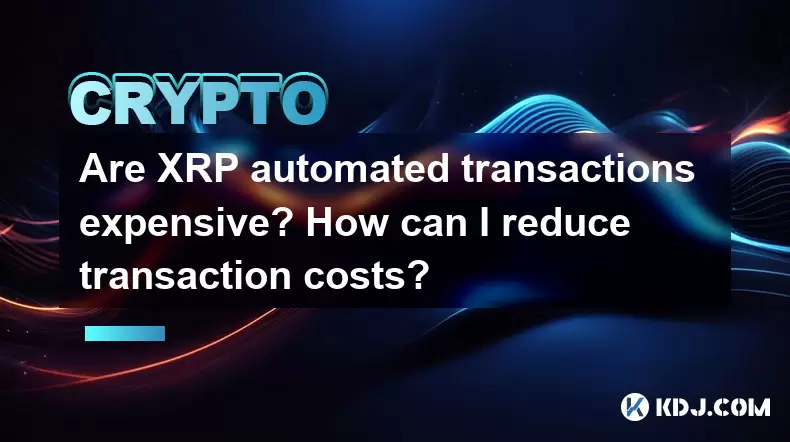
Are XRP automated transactions expensive? How can I reduce transaction costs?
Automated transactions using XRP can vary in cost, depending on several factors such as network congestion, transaction size, and the urgency of the transaction. Understanding these factors is crucial for anyone looking to manage and potentially reduce their transaction costs effectively.
Factors Affecting XRP Transaction Costs
XRP transaction costs are influenced by a few key elements. The most significant factor is the transaction fee, which is calculated based on the size of the transaction and the current demand on the XRP Ledger. When the network is congested, fees can increase as users compete to have their transactions processed more quickly. Another factor is the destination tag, which can add a small amount to the overall cost if it is used. Additionally, the urgency of the transaction can affect costs; opting for a faster processing time can result in higher fees.
How to Calculate XRP Transaction Fees
Calculating XRP transaction fees involves understanding the fee structure of the XRP Ledger. The fee is typically measured in drops, where 1 XRP equals 1 million drops. The base transaction fee is set at 10 drops per transaction, but this can increase during times of high network activity. To calculate the fee, you multiply the number of transactions by the fee per transaction. For instance, if you are sending 100 XRP and the current fee is 12 drops per transaction, your total fee would be 1200 drops, or 0.0012 XRP.
Strategies to Reduce XRP Transaction Costs
There are several strategies you can employ to minimize your XRP transaction costs. One effective method is to use a destination tag, which can help route your transaction more efficiently and potentially reduce fees. Another strategy is to time your transactions during periods of lower network activity, when fees are generally lower. Additionally, bundling multiple transactions into a single transaction can also help reduce costs by spreading the fee across multiple operations.
Setting Up Automated XRP Transactions
To set up automated XRP transactions, you will need to follow a series of steps. Here’s how you can do it:
- Choose a reliable wallet: Select a wallet that supports automated transactions and XRP, such as Ledger Live or Trust Wallet.
- Generate an XRP address: Create an XRP address within your chosen wallet. This will be the address from which you will send your automated transactions.
- Set up the automation: Depending on your wallet, you may need to use a third-party service or the wallet’s built-in features to set up automated transactions. For example, in Ledger Live, you can set up recurring payments by navigating to the “Send” section and selecting “Schedule”.
- Configure the transaction details: Enter the recipient’s XRP address, the amount you wish to send, and any other necessary details such as a destination tag. Set the frequency and duration of the automated transactions.
- Review and confirm: Double-check all the details before confirming the setup of your automated transactions. Ensure that the fees are within your budget and that the transactions are scheduled correctly.
Monitoring and Adjusting Automated XRP Transactions
Once your automated XRP transactions are set up, it’s important to monitor them regularly to ensure they are functioning as intended and to adjust them as necessary. You can do this by:
- Checking transaction history: Regularly review the transaction history in your wallet to ensure that the automated transactions are being processed correctly and that the fees are as expected.
- Adjusting transaction parameters: If you notice that fees are higher than anticipated, you may need to adjust the timing of your transactions or the amount being sent to reduce costs.
- Staying informed about network conditions: Keep an eye on the overall activity of the XRP Ledger. If you notice that the network is experiencing high congestion, you may want to pause your automated transactions until conditions improve.
Using XRP Transaction Optimizers
There are tools and services available that can help optimize your XRP transactions and potentially reduce costs. Transaction optimizers analyze the current state of the XRP Ledger and recommend the best times to send transactions to minimize fees. Some popular optimizers include:
- XRPL Labs’ Transaction Cost Estimator: This tool provides real-time estimates of transaction costs based on current network conditions.
- Ripple’s Fee Calculator: Ripple offers a fee calculator that can help you predict the costs of your transactions and plan accordingly.
- Third-party services: There are also third-party services that offer more advanced optimization features, such as automatically adjusting transaction parameters based on network conditions.
Frequently Asked Questions
Q: Can I set up automated XRP transactions without using a destination tag?
A: Yes, you can set up automated XRP transactions without using a destination tag, but keep in mind that using a destination tag can help route your transactions more efficiently and potentially reduce costs.
Q: How often should I review my automated XRP transactions?
A: It’s a good practice to review your automated XRP transactions at least once a week to ensure they are functioning correctly and to adjust them if necessary based on network conditions and fee changes.
Q: Are there any risks associated with using third-party transaction optimizers?
A: While third-party transaction optimizers can help reduce costs, there are risks involved, such as potential security vulnerabilities and dependency on the service. Always research and choose reputable services to minimize these risks.
Q: Can I change the frequency of my automated XRP transactions after they are set up?
A: Yes, you can change the frequency of your automated XRP transactions. Most wallets and services allow you to adjust the settings of your scheduled transactions at any time.
Disclaimer:info@kdj.com
The information provided is not trading advice. kdj.com does not assume any responsibility for any investments made based on the information provided in this article. Cryptocurrencies are highly volatile and it is highly recommended that you invest with caution after thorough research!
If you believe that the content used on this website infringes your copyright, please contact us immediately (info@kdj.com) and we will delete it promptly.
- XRP: Crypto Analyst's Smartest Buy in 2025?
- 2025-08-04 00:30:13
- SEC, Crypto Regulation, and Digital Assets: A New Era?
- 2025-08-04 00:30:13
- Navigating the Meme Coin Mania: Cold Wallets, SHIB, and DOGE in 2025
- 2025-08-03 22:30:16
- Bitcoin's Price Fall and Scrutiny: What's a New Yorker to Think?
- 2025-08-03 22:30:16
- Shiba Inu's Resistance and Recovery Push: What's Next for SHIB?
- 2025-08-03 22:50:16
- Bitcoin, Hashcash, and Crypto Innovation: A Look at the Foundation and Future
- 2025-08-03 23:12:53
Related knowledge

What is Chainlink (LINK)?
Jul 22,2025 at 02:14am
Understanding Chainlink (LINK): The Decentralized Oracle NetworkChainlink is a decentralized oracle network designed to bridge the gap between blockch...
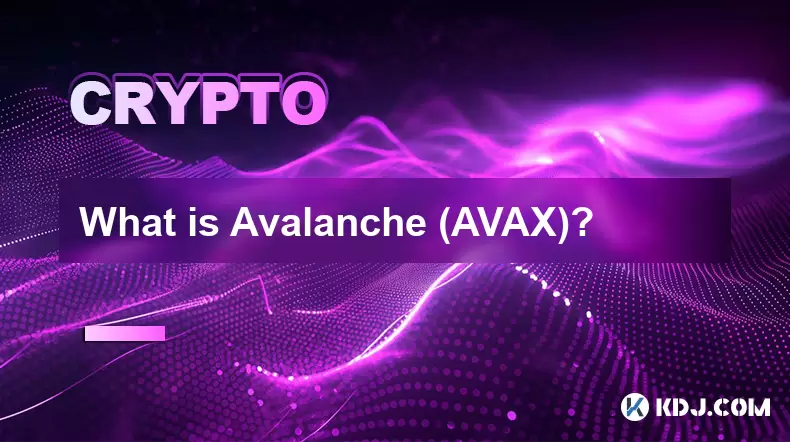
What is Avalanche (AVAX)?
Jul 22,2025 at 08:35am
What is Avalanche (AVAX)?Avalanche (AVAX) is a decentralized, open-source blockchain platform designed to support high-performance decentralized appli...

What is Polkadot (DOT)?
Jul 19,2025 at 06:35pm
Understanding the Basics of Polkadot (DOT)Polkadot (DOT) is a multi-chain network protocol designed to enable different blockchains to transfer messag...
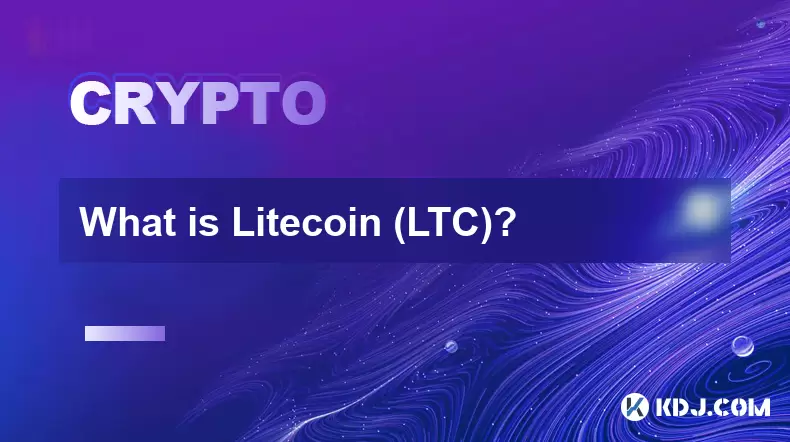
What is Litecoin (LTC)?
Jul 23,2025 at 11:35am
Overview of Litecoin (LTC)Litecoin (LTC) is a peer-to-peer cryptocurrency that was created in 2011 by Charlie Lee, a former Google engineer. It is oft...
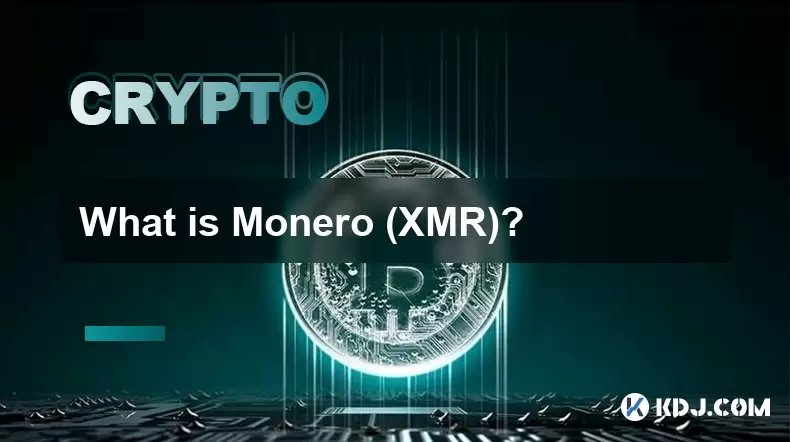
What is Monero (XMR)?
Jul 21,2025 at 10:07am
What is Monero (XMR)?Monero (XMR) is a decentralized cryptocurrency designed to provide enhanced privacy and anonymity for its users. Unlike Bitcoin a...
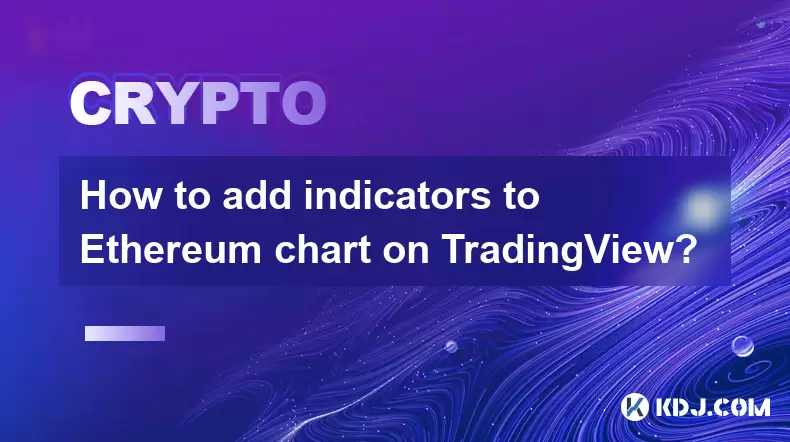
How to add indicators to Ethereum chart on TradingView?
Jul 19,2025 at 07:15am
What Is an Ethereum Chart on TradingView?The Ethereum chart on TradingView is a visual representation of the price movement of Ethereum (ETH) over a s...

What is Chainlink (LINK)?
Jul 22,2025 at 02:14am
Understanding Chainlink (LINK): The Decentralized Oracle NetworkChainlink is a decentralized oracle network designed to bridge the gap between blockch...

What is Avalanche (AVAX)?
Jul 22,2025 at 08:35am
What is Avalanche (AVAX)?Avalanche (AVAX) is a decentralized, open-source blockchain platform designed to support high-performance decentralized appli...

What is Polkadot (DOT)?
Jul 19,2025 at 06:35pm
Understanding the Basics of Polkadot (DOT)Polkadot (DOT) is a multi-chain network protocol designed to enable different blockchains to transfer messag...

What is Litecoin (LTC)?
Jul 23,2025 at 11:35am
Overview of Litecoin (LTC)Litecoin (LTC) is a peer-to-peer cryptocurrency that was created in 2011 by Charlie Lee, a former Google engineer. It is oft...

What is Monero (XMR)?
Jul 21,2025 at 10:07am
What is Monero (XMR)?Monero (XMR) is a decentralized cryptocurrency designed to provide enhanced privacy and anonymity for its users. Unlike Bitcoin a...

How to add indicators to Ethereum chart on TradingView?
Jul 19,2025 at 07:15am
What Is an Ethereum Chart on TradingView?The Ethereum chart on TradingView is a visual representation of the price movement of Ethereum (ETH) over a s...
See all articles

























































































